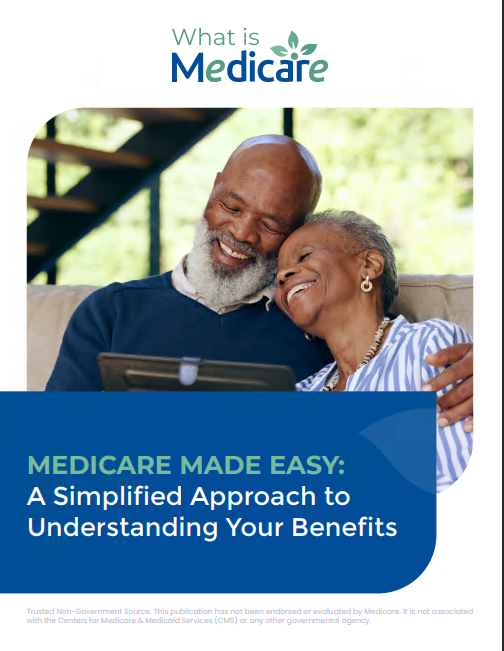Key Takeaways
-
Medicare and Medicaid dual eligibility opens the door to a broader range of healthcare benefits, potentially reducing your out-of-pocket costs.
-
Understanding how these programs work together can help you maximize your healthcare coverage and financial savings.
Unlocking the Power of Dual Eligibility
Are you wondering if you qualify for both Medicare and Medicaid? Dual eligibility isn’t as complicated as it sounds and could be the key to accessing more comprehensive healthcare benefits. If you meet the requirements for both programs, you’ll enjoy a level of coverage that can make healthcare costs far more manageable. Let’s dive into what dual eligibility is all about and how it can work for you.
1. What Does Dual Eligibility Mean?
Dual eligibility refers to individuals who qualify for both Medicare and Medicaid. Medicare is a federal program designed for people aged 65 and older or younger individuals with certain disabilities. Medicaid, on the other hand, is a joint federal and state program that provides health coverage to low-income individuals.
When you’re dual eligible, Medicaid often acts as a safety net, covering costs that Medicare doesn’t fully pay. This combination can significantly reduce your out-of-pocket expenses for healthcare services, making it an excellent option for those who qualify.
2. Who Qualifies for Dual Eligibility?
To qualify for dual eligibility, you must meet the requirements for both Medicare and Medicaid. Here’s a breakdown:
Medicare Eligibility:
-
You’re 65 years or older, or you have a qualifying disability or medical condition (e.g., end-stage renal disease).
-
You’ve worked and paid Medicare taxes for at least 10 years or meet alternative requirements through a spouse or parent.
Medicaid Eligibility:
-
Your income and resources fall within your state’s guidelines. While income limits vary, Medicaid programs are generally aimed at low-income individuals.
In 2025, specific income and resource thresholds vary by state, but most Medicaid programs consider assets like savings accounts, real estate (other than your primary home), and vehicles. Always check your state’s requirements to confirm eligibility.
3. Key Benefits of Being Dual Eligible
Dual eligibility offers several perks that could significantly improve your access to healthcare services while saving you money. Here are some key benefits:
a. Reduced Out-of-Pocket Costs
Medicare typically has deductibles, copayments, and coinsurance for covered services. If you’re dual eligible, Medicaid may cover many of these expenses. For instance, Medicaid often pays the Medicare Part B premium and may cover Medicare deductibles and coinsurance.
b. Broader Coverage
Medicare and Medicaid together provide more comprehensive coverage. Medicare handles primary healthcare services like hospital stays, doctor visits, and prescription drugs. Medicaid can cover additional benefits such as dental, vision, hearing aids, and even long-term care services.
c. Access to Special Plans
Dual-eligible individuals may have access to special plans called Dual Eligible Special Needs Plans (D-SNPs) under Medicare Advantage. These plans coordinate Medicare and Medicaid benefits for seamless care.
d. Prescription Drug Savings
If you’re dual eligible, you’ll automatically qualify for Extra Help, a program that significantly reduces prescription drug costs under Medicare Part D. This includes lower premiums, deductibles, and copayments.
4. Dual Eligibility Categories
Not all dual-eligible individuals receive the same benefits. Understanding the categories can help you determine your level of coverage:
Full-Benefit Dual Eligibility
You qualify for full Medicaid benefits, which include all covered services in your state. Medicaid will also pay for your Medicare Part B premium, deductibles, and copayments.
Partial-Benefit Dual Eligibility
You don’t qualify for full Medicaid benefits, but Medicaid helps with Medicare-related costs, such as paying for Part B premiums through Medicare Savings Programs (MSPs). These include:
-
Qualified Medicare Beneficiary (QMB): Covers Part A and B premiums, deductibles, and coinsurance.
-
Specified Low-Income Medicare Beneficiary (SLMB): Pays the Part B premium.
-
Qualified Individual (QI): Also covers the Part B premium but has stricter income requirements.
-
Qualified Disabled and Working Individual (QDWI): Assists with Part A premiums for specific disabled individuals.
5. How to Apply for Dual Eligibility
Applying for dual eligibility involves enrolling in both Medicare and Medicaid. Here’s how you can get started:
Step 1: Enroll in Medicare
-
If you’re not automatically enrolled, apply through the Social Security Administration (SSA).
-
Enrollment periods include your Initial Enrollment Period (around your 65th birthday), General Enrollment Period (January 1 to March 31), or Special Enrollment Periods (triggered by qualifying life events).
Step 2: Apply for Medicaid
-
Visit your state’s Medicaid office or apply online through your state’s portal.
-
Provide documentation like proof of income, assets, and residency.
Step 3: Coordinate Benefits
Once approved, your Medicare and Medicaid benefits will be coordinated. If you’re eligible for a D-SNP, you may also want to explore those options to simplify your coverage.
Tips for Maximizing Dual Eligibility Benefits
Being dual eligible is just the first step. Here are some tips to make the most of your coverage:
1. Understand Your Benefits
Take the time to learn what Medicare and Medicaid cover individually and together. Review your state’s Medicaid benefits and how they supplement Medicare coverage.
2. Leverage Preventive Services
Both Medicare and Medicaid cover many preventive services, such as screenings, vaccines, and annual wellness visits. Take advantage of these to stay ahead of potential health issues.
3. Communicate with Providers
Inform your healthcare providers that you’re dual eligible. This helps them bill the appropriate program for services, ensuring minimal cost to you.
4. Use Extra Help for Prescriptions
Make sure you’re enrolled in a Medicare Part D plan to access Extra Help benefits. This can drastically reduce your prescription drug costs.
5. Consider a D-SNP
A Dual Eligible Special Needs Plan can simplify your coverage by combining Medicare and Medicaid benefits. These plans often include extra benefits, like transportation to medical appointments or over-the-counter allowances.
Common Questions About Dual Eligibility
Can You Lose Dual Eligibility?
Yes, changes in income or assets may affect your Medicaid eligibility. Keep track of your state’s requirements and report any changes in circumstances promptly.
What Happens During the Redetermination Process?
Medicaid eligibility is reviewed annually in most states. You’ll need to provide updated information about your income, assets, and household composition. Failing to respond to redetermination requests could result in losing coverage.
Are There Penalties for Late Enrollment?
If you’re dual eligible, Medicaid often pays your Medicare premiums, so you’re unlikely to face penalties for late enrollment. However, it’s still best to enroll during the appropriate enrollment periods to avoid gaps in coverage.
Key Dates and Deadlines to Remember
-
-
Initial Enrollment Period: 7-month window around your 65th birthday.
-
General Enrollment Period: January 1 to March 31.
-
Special Enrollment Periods: Triggered by qualifying events, such as losing employer coverage.
-
-
Medicaid Redetermination:
-
Annual redetermination deadlines vary by state. Check with your state Medicaid office for specific timelines.
-
Don’t Overlook Dual Eligibility Benefits
Dual eligibility is a game-changer for those who qualify. By combining Medicare and Medicaid, you’ll access a broader range of benefits and potentially save a significant amount on healthcare costs. Stay proactive in understanding and managing your dual eligibility status to make the most of these programs.










